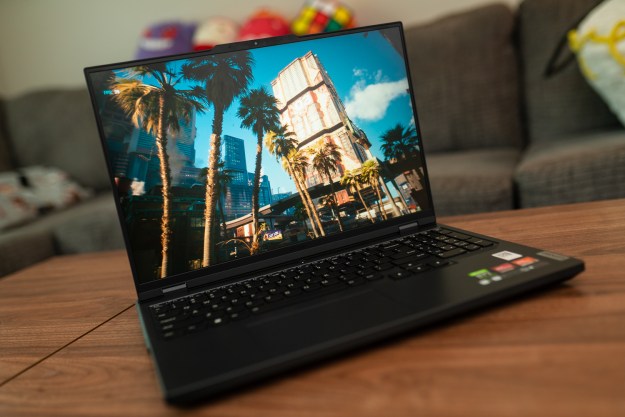With the launch of the Flex 5G laptop, Lenovo says it has become the first company to offer a notebook equipped with 5G mobile connectivity.
In the United States, the Flex 5G will launch on Verizon Wireless. Internationally, the laptop also goes by the Yoga 5G brand and will be available on carriers like EE, Sunrise, and CMCC later this year. With a 360-degree hinge, you can use the Flex 5G as a notebook, tablet, or in tent mode to present information or consume media on its 14-inch FHD touchscreen display.
“With our strategic partnerships with global 5G network carriers, consumers will now be able to access easier, faster, and more secure connectivity seamlessly from virtually anywhere,” Johnson Jia, Lenovo’s senior vice president and general manager of the Consumer Business Segment, said in a statement. The company noted that 5G mobile broadband promises up to 10 times the speeds of the existing 4G LTE standard used on many of the connected smartphones, tablets, and laptops in use today. The 5G modem supports both mmWave and sub-6 GHz frequencies, ensuring broad compatibility with various 5G networks.

While the Flex 5G runs Microsoft’s Windows 10 operating system, it is powered by Qualcomm’s ARM-based Snapdragon 8cx platform and not the traditional Intel or AMD x86 silicon. This chipset makes the Flex 5G more comparable to devices like Samsung’s Galaxy Book S and Microsoft’s Surface Pro X, rather than the Surface Laptop, with the ARM-based processor being efficient enough to provide up to 24 hours of battery life on the go. There is an integrated fingerprint reader to keep your data secure while mobile. Like many modern devices, the Flex 5G can be recharged with a 45W USB-C charger.
Despite the power efficiency of the chip, users of the Snapdragon PC platform have complainedin the past about performance bottlenecks because x86 programs have to be emulated to run on ARM. However, if you mostly stay within the web browser, work primarily in Microsoft Office, and run Universal Windows Platform (UWP) apps downloaded from the Microsoft Store, then the platform is more than capable. The Flex 5G will compete against Google’s Chromebooks and Intel’s Project Athena initiative. Unlike many Chromebooks with limited native storage, the Flex 5G comes with a spacious 256 GB UFS 3.0 drive.

A big downside with the Flex 5G in an age of Zoom and Google Meet video calls is that the webcam is limited to just 720p, which really is a shame given the promise of faster 5G networks. Another omission is the lack of Wi-Fi 6 support — instead, the Flex 5G will connect to home and business networks over 802.11 ac. Like 5G, Wi-Fi 6 is still a nascent standard that’s not widely available, but its inclusion would have made the Flex 5G more future-proof.
The Flex 5G will be available starting June 18 through Verizon for $1,399. Though this may be a steep price, you will be getting 5G connectivity in the limited areas where Verizon’s network is built out, a one-year subscription to Microsoft 365 Personal, and a premium metal build with an aluminum top case and a magnesium alloy bottom. You can also finance the device for $58.33 per month on a 24-month Verizon Device Payment Plan interest-free.
Editors' Recommendations
- 5 laptops you should buy instead of the M2 MacBook Air
- 6 laptops you should buy instead of the MacBook Air
- This is the best Lenovo gaming PC you can buy
- This is the best Dell gaming laptop you can buy
- This is the best Alienware gaming laptop you can buy


